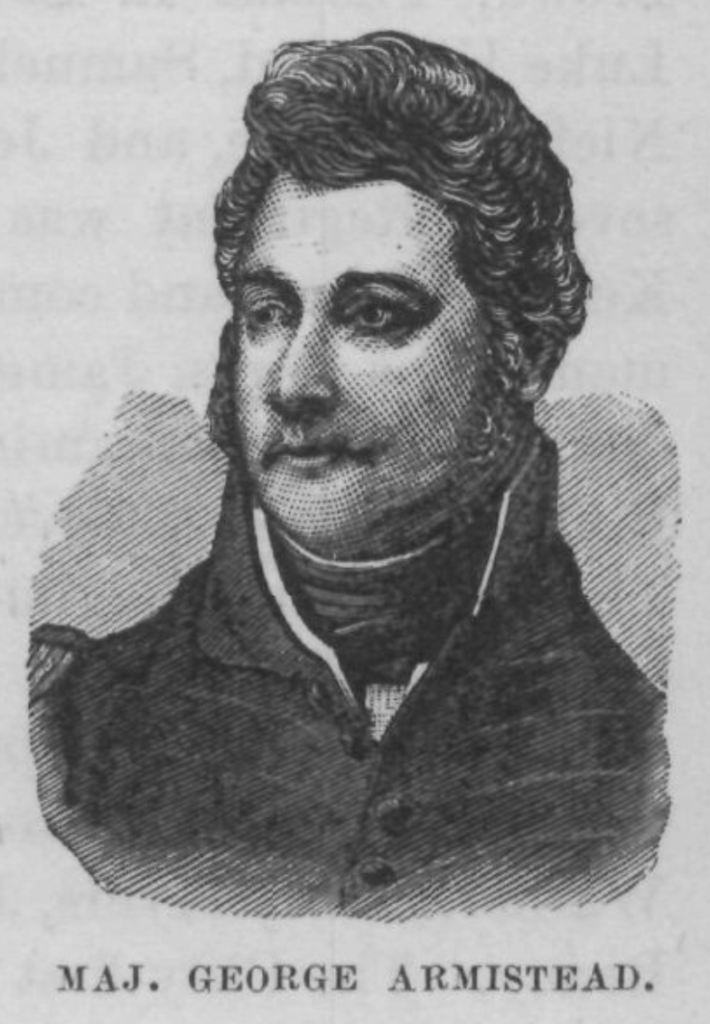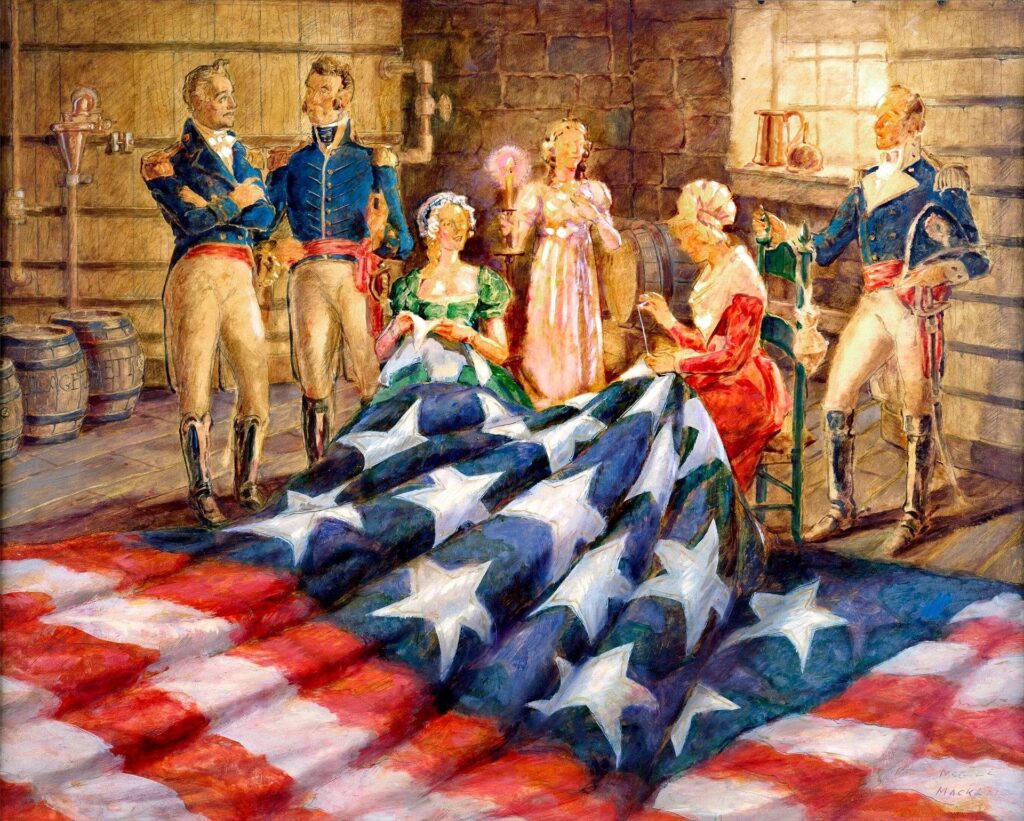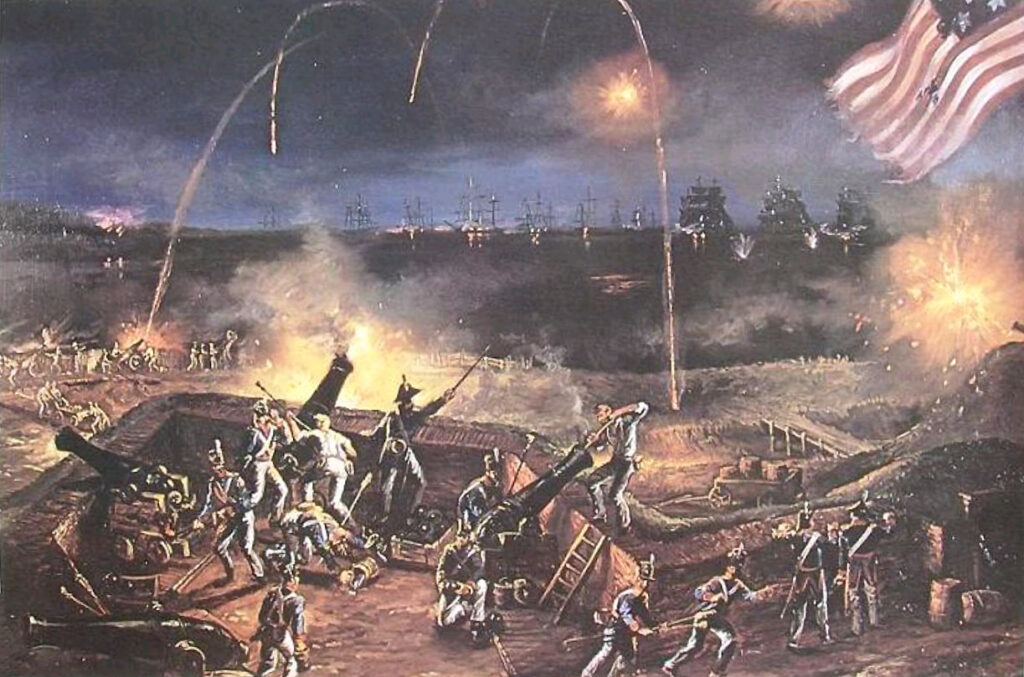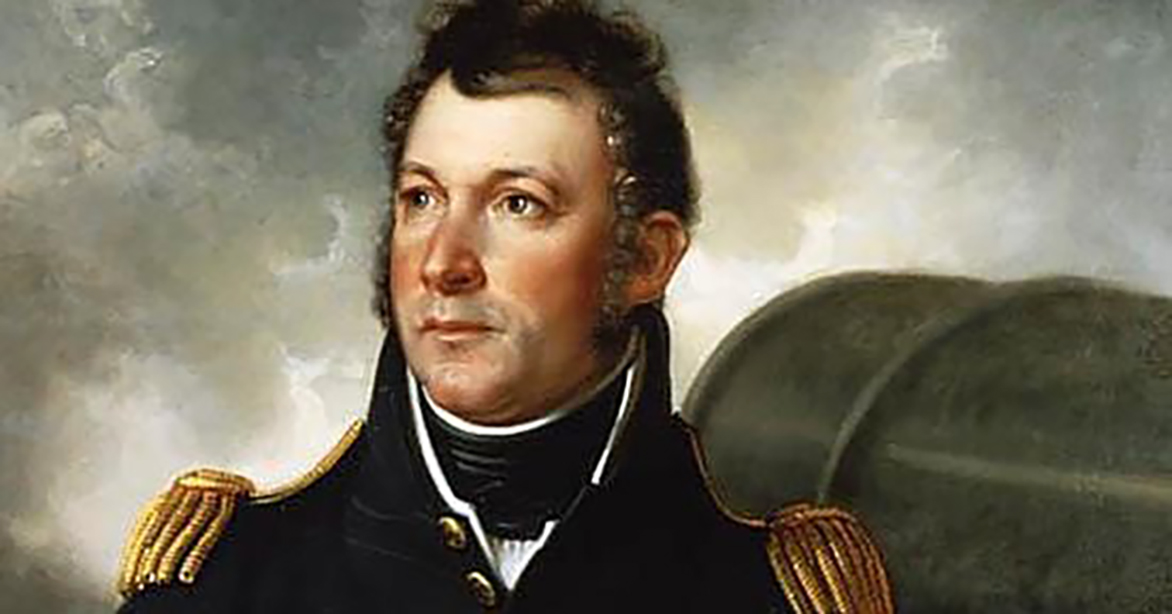In the Spring of 1814, the war between the British and the still-young United States looked pretty bleak for the Americans. The War of 1812 had started with a bang for the U.S., with American troops crippling the war efforts of Native tribes in the south and making incursions into British Canada in the north.
But 1814 was a turning point for the British Empire. It had just defeated Napoleon and sent the Emperor to exile on the island of Elba. This victory allowed Britain to move 30,000 veteran soldiers from Europe to North America, where a three-pronged plan threatened to cut the new republic to a shell of its former self.
The British sent three expeditions, each with 10,000 fresh, skilled soldiers, toward three targets: New York City, Baltimore, and New Orleans. If any of them succeeded in capturing their objectives, the Americans would be forced to make disastrous concessions in the Treaty of Ghent, negotiated to end the war.

If New Orleans fell, it would have invalidated the Louisiana Purchase, which was made by Napoleon and recognized by no one else in Europe. This could have meant the cession of the entire territory to Britain or returning it to Spain. If New York fell, the British would have claimed most of Maine, where the crown established the colony of New Ireland.
At Baltimore, if the defenders of the area could not hold, either of the other two concessions might have been forced on the Americans. All three were the top cities in the United States in terms of size and economic importance.
The British combined forces defeated a naval flotilla of American gunboats and succeeded in landing more than 4,000 troops in Virginia. The British marched into Maryland, routing a small contingent of Americans before meeting a much larger force of U.S. Army Soldiers, Marines, and Sailors at the Battle of Bladensburg.
Despite being outnumbered and assaulting a heavily-defended position, the British won at Bladensburg, from which they marched on Washington and put the capital city to the torch. Their next stop was Baltimore, with a land attack coming from North Point and a naval assault of Fort McHenry, which guarded the entrance to the harbor.

George Armistead Distinguished Himself at the Capture of Fort George
The Americans at Fort McHenry knew the British would be coming for them. The commander of the harbor defenses of Baltimore, Maj. George Armistead wanted the British to know who controlled the point defense of Baltimore Harbor before the attack – and who controlled it when the smoke cleared.
George Armistead was a seasoned artillery officer. He cut his teeth in the Quasi-War with France and, earlier in the War of 1812, was part of the force that took the fight to the British in Canada. He had helped the Americans capture Fort George in Ontario and personally delivered the fort’s captured flags to President James Madison.
That’s how he ended up in command of Fort McHenry. Upon taking command of the fort, he determined that something important was missing from the fort’s defenses: a garrison flag. George Armistead boldly ordered “a flag so large that the British will have no difficulty seeing it from a distance.”
He custom ordered one from local flag maker Mary Pickersgill, who had to sew the massive 30×42-foot Stars and Stripes on the floor of a beer brewery, given its size. Pickersgill and five associates sewed nonstop for six weeks in preparation for delivery. In August 1813, the flag was delivered to Fort McHenry.

When the battle finally came on Sept. 13, 1814, Armistead and his massive Old Glory were ready. The veteran artillery commander had 1,000 troops under his command, who had spent the past few months reinforcing the bricks and mortars of the fort. He’d even sunk a line of American ships in the harbor to thwart the passage of British warships.
Some 19 British ships shelled Fort McHenry for 25 hours that September with Congreve rockets, cannon shots, and mortars. Since the ships were out of range of Fort McHenry’s guns, the fort’s defenders hunkered down to wait out the British shelling.
The fort itself, however, was far from bombproof, but George Armistead was the only one who knew it. All was almost lost when a British shell hit the magazine, but it failed to explode. Armistead ordered the fort’s powder be moved to the rear walls.
Nearly 2,000 shots were fired at the fort. On the morning of Sept. 14, Fort McHenry’s defenders hoisted Mrs. Pickersgill’s enormous American flag into the sky over the area. With its 15 stripes, each two feet wide (the practice of adding stripes for states wasn’t stopped until much later), it weighed 50 pounds and required 11 men to raise.

With this massive flag flying, there was no doubt the Americans still held the fort. The commander of the British combined force, Vice Admiral Sir Arthur Cochrane, left it to the commander of the British land forces to decide whether or not to attack the fort. Back at North Point, the British had won, but at a cost. They took heavy casualties, including their commander, Maj. Gen. Robert Ross.
With the land forces delayed, their commander mortally wounded, and Americans still in control of Fort McHenry, the British withdrew. The British overland invasion of New York had been turned away at Plattsburgh. The attack on New Orleans in 1815 would also fail, keeping the United States whole through the war’s end.
Armistead’s flag not only had a major impact on the outcome of the Battle of Baltimore but also touched an individual held aboard one of the British ships in the harbor. Lawyer Francis Scott Key was aboard the HMS Tonnant, negotiating the release of his friend who was being held, prisoner. Knowing the British intent and strength, Key was held aboard this ship throughout the bombing of the fort.
On the Tonnant, he penned a poem, “Defence of Fort M’Henry,” which was published in American newspapers the next week. When paired with the tune of the popular drinking song “To Anacreon in Heaven,” it became the unofficial anthem of the United States until 1931, when it officially became “The Star-Spangled Banner.”
Armistead’s original flag is today held by the Smithsonian Institution in Washington, D.C., where it is occasionally still available for display.
Read About Other Profiles in Courage
If you enjoyed learning about Maj. George Armistead, we invite you to read about other profiles in courage on our blog. You will also find military book reviews, veterans’ service reflections, famous military units and more on the TogetherWeServed.com blog. If you are a veteran, find your military buddies, view historic boot camp photos, build a printable military service plaque, and more on TogetherWeServed.com today.

0 Comments